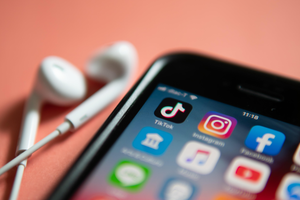Chinese vendor cited as a potential buyer of struggling Palm, plus other news from the global smartphone market
April 13, 2010

China's Huawei Technologies Co. Ltd. is the latest company to be linked to an acquisition of struggling smartphone manufacturer Palm Inc. , which has called in Goldman Sachs & Co. and San Francisco-based Qatalyst Partners to look for a buyer, according to reports. (See Palm Reports Fiscal Q3.)
And Huawei is far from the only Asian vendor believed to be involved in talks with Palm, which has been hard hit by growing competition from rivals such as BlackBerry and Apple Inc. (Nasdaq: AAPL) after its Pre and Pixi smartphones failed to sell as well as hoped. Taiwan's High Tech Computer Corp. (HTC) (Taiwan: 2498) and China's Lenovo Group Ltd. (Hong Kong: 992) are also rumoured to be interested.
But the list of potential suitors goes further, with even Apple and Intel Corp. (Nasdaq: INTC)'s names thrown into the rumor melting pot.
The smartphone market is certainly active this week: Not only did Microsoft Corp. (Nasdaq: MSFT) unveil its first own-brand smartphones on Monday, but Nokia Corp. (NYSE: NOK) and Sony Ericsson Mobile Communications also unveiled new models today. (See Microsoft Has Two New Kin.)
Nokia's three new phones are probably more accurately described as low-end smartphones, or even smarter dumbphones. The Finnish company added to its lineup of messaging and social-networking phones with the C3, C6, and E5, and all will be priced towards the lower end of the smartphone scale.
The C3 is the first Series 40 device to offer a full QWERTY keyboard and will retail at an estimated US$122 before taxes and subsidies. It is expected to be available in the second quarter of this year. The C6 is based on the Symbian operating system and will retail at $300. It will also come onto the market in the second quarter.
The E5 is the latest addition to the enterprise E-series range, and combines consumer-oriented features such as personal networking and entertainment, with business features such as Mail for Exchange and Lotus Notes Traveler. The estimated price is $245 before taxes and subsidies, with expected availability in the third quarter of 2010.
Sony Ericsson, meanwhile, has added two new entry-point Walkman phones (better described as feature phones than smartphones) to its range. The Zylo and Spiro will combine music capabilities with social networking features and will be available from the third quarter. Retail prices have not been disclosed.
Handset manufacturers are all bidding for a greater slice of the smartphone market, which is seen as the highest-growth area of the mobile handset market. Indeed, research from Parks Associates indicates that smartphone sales topped 180 million in 2009, with Nokia, Apple, and RIM sharing 60 percent of the market. Annual smartphone sales are expected to reach almost 400 million in 2014, when the number of users will approach 1 billion, according to Parks estimates.
Gartner Inc. said in February that global smartphone sales increased by 23.8 percent to 172.4 million in 2009, while total mobile sales declined by 0.9 percent to 1.21 billion over the year. In March, Gartner noted that sales of touchscreen mobile devices are set to exceed 362.7 million in 2010, an increase of 96.8 percent from 2009 sales of 184.3 million units.
— Anne Morris, freelance editor, special to Light Reading
You May Also Like









